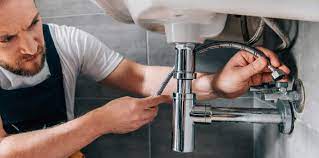Toilet repair and installation are common plumbing tasks that may require professional assistance. Here’s a guide on how to approach toilet repair and installation:
Toilet Repair:
- Common Toilet Issues:
- Identify the specific issue with your toilet. Common problems include leaks, running water, flushing problems, or a malfunctioning fill valve.
- Turn Off the Water Supply:
- Locate the shut-off valve near the base of the toilet and turn it clockwise to shut off the water supply.
- Inspect the Flush Mechanism:
- Remove the tank lid and inspect the flush mechanism. Check for any visible issues, such as a broken chain, flapper, or flush valve.
- Check for Leaks:
- Look for leaks around the base of the toilet and connections. If you find any, it may indicate a faulty wax ring or loose connections.
- Replace Flapper or Fill Valve:
- If the flapper or fill valve is damaged, consider replacing them. These are common parts that can be found at hardware stores.
- Adjust Water Level:
- Adjust the water level in the tank to the recommended level marked on the overflow tube. This can prevent water from overflowing into the bowl.
- Fix Running Toilet:
- If the toilet continues to run after flushing, adjust the chain length or replace the flapper.
- Address Clogs:
- Use a plunger to address minor clogs. For stubborn clogs, a toilet auger or drain snake may be needed.
- Call a Professional:
- If you are unable to identify or fix the issue, or if there’s a major problem like a cracked bowl or tank, it’s advisable to call a professional plumber.
Toilet Installation:
- Choose a New Toilet:
- Select a new toilet that fits your bathroom layout and meets your preferences. Consider factors such as bowl shape, flushing mechanism, and water efficiency.
- Gather Necessary Tools and Materials:
- Before starting the installation, gather tools and materials, including a wrench, screwdriver, wax ring, toilet bolts, and a level.
- Turn Off Water Supply:
- Shut off the water supply to the existing toilet by turning the shut-off valve clockwise.
- Remove the Old Toilet:
- Disconnect the water supply line and remove the bolts securing the toilet to the floor. Lift the old toilet and place it aside. Scrape off the old wax ring from the flange.
- Inspect and Prepare Flange:
- Inspect the flange for any damage. Install a new wax ring onto the flange to create a watertight seal.
- Install New Toilet:
- Carefully position the new toilet over the flange and press it down onto the wax ring. Secure the toilet to the floor using new bolts. Ensure the toilet is level.
- Connect Water Supply:
- Reconnect the water supply line to the toilet fill valve. Turn on the water supply and check for any leaks.
- Secure the Toilet Tank:
- Follow the manufacturer’s instructions to secure the toilet tank to the bowl. Tighten the bolts evenly to prevent uneven pressure.
- Test Flush and Adjust:
- Flush the toilet and check for proper flushing and filling. Adjust the water level in the tank if necessary.
- Seal Base:
- Apply a bead of caulk around the base of the toilet to create a finished look and prevent water damage.
- Dispose of the Old Toilet:
- Properly dispose of the old toilet according to local regulations. Some sanitation departments may have specific guidelines for toilet disposal.
If you are uncertain about any aspect of toilet repair or installation, or if you encounter difficulties, it’s recommended to seek professional assistance from a licensed plumber. They have the expertise to handle a wide range of plumbing issues and ensure that the repair or installation is done correctly.






